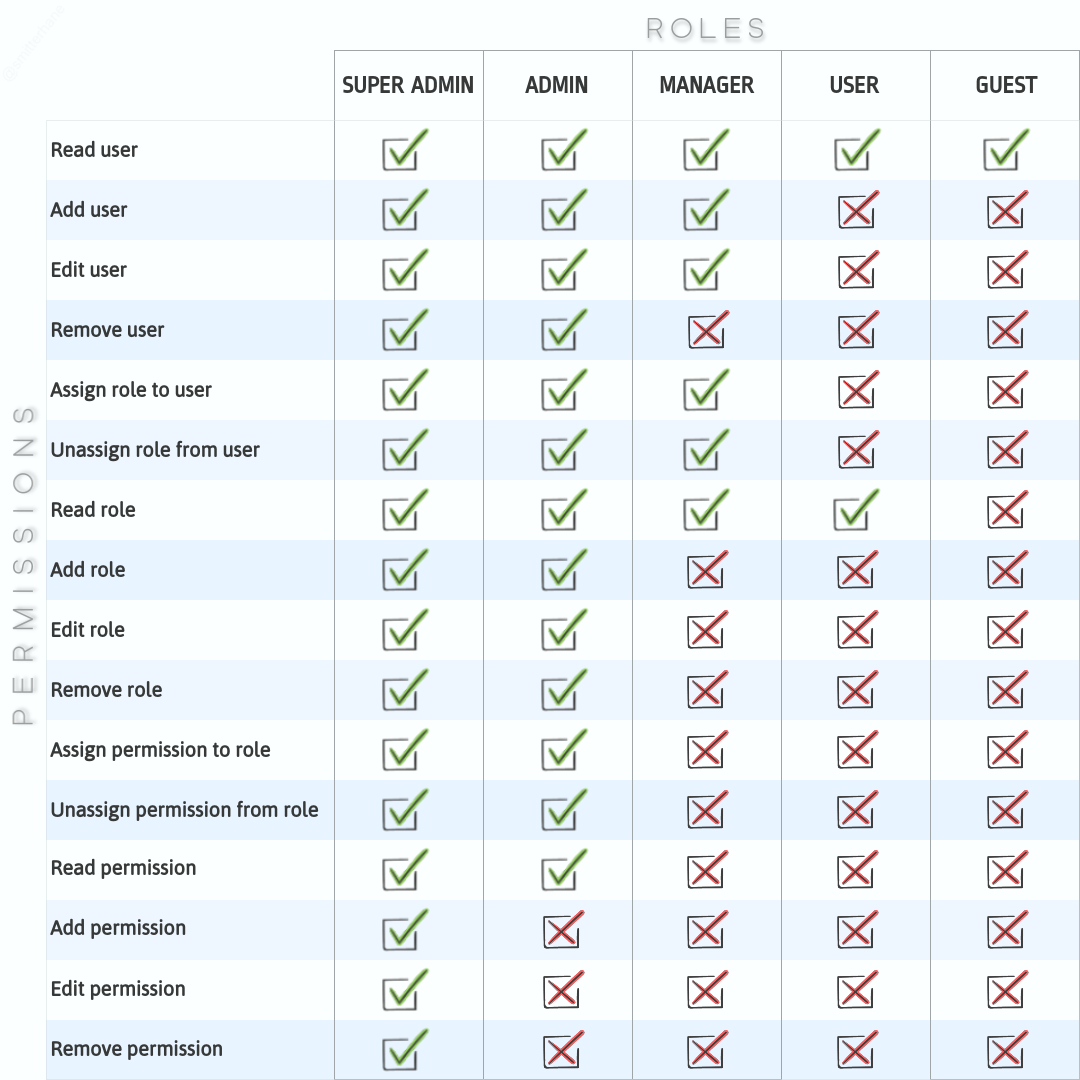Role-based Access Control(RBAC) is a security mechanism used in software systems to manage and restrict access to resources according to predefined role(s) assigned to users of the system.
This repository provides an implementation of Role-Based Access Control(RBAC) to secure a RESTful API by protecting resources from unauthorized access. It ensures that only authorized users—those with the required permissions for a specific resource—can gain access.
JSON serves as the representational format for the endpoints, facilitating seamless integration with front-end applications, whether web, mobile, or other platforms.
Note: Users referred here are database-seeded. Scope of this repo is narrowed to focus on RBAC implementation. User signup and login is not covered here. If this is a feature you would like to build on top, this repo is a meticulous guide with all features of a typical User Authentication, such as sign up, login, password reset, ....
Typescript is extensively used for strong type-safety.
Project is open for suggestions, Bug reports and pull requests.
Ensure you have Node.js and MySQL installed on the platform you wish to run this project. Node.js version 18.11+ is recommended.
-
Clone the project into your local computer:
git clone https://github.com/hane-smitter/RBAC_node_impl.git
-
Change into directory with the project and run:
npm install
-
Copy
.env.examplefile into a new file with the name:.env. The command in Linux:cp .env.example .env
You should have the following variables:
DB_USER= DB_PASS= DB_HOST= DB_PORT= SERVER_PORT=
DB_USER- Is the database user name, e.g root
DB_PASS- Is the password of the database. Leave empty if no password is needed.
DB_HOST- Is the host of the database. If you have installed MySQL locally, this should be127.0.0.1.
DB_PORT- Is the port the database engine is listening to. MySQL default port is3306. If it is modified, just ensure you provide it here.
SERVER_PORT- Is the port our server will listen to when application is run. If left empty, it defaults to3000.In the
.env, provide the values for these variables. -
API routes are protected. Home(
/) route is the only exception. You need to be a user with a role—that has the required permissions for a particular resource—to gain access.To seed users with assigned roles, run:
npm run seed
This following users with asssigned roles will be created:
firstName lastName role Hakuna Matata Super Admin Cinderella Mitchell Manager Malik Tembo Admin John Doe User Linda Okello Guest Eva Stephanie Guest The image below shows permissions under each role:
 Roles with their permissions.
Roles with their permissions.